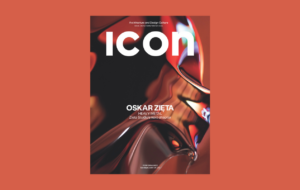|
Katie Perry’s false eyelashes, a 3D-printed gun, Primark jeans and Christian Louboutin shoes are the latest additions to the Victoria & Albert Museum’s collection. We spoke to the curator of a new exhibition to find out why Katie Perry’s false eyelashes, a 3D-printed gun, a pair of Primark cargo trousers, a cuddly wolf toy and a series of Christian Louboutin shoes are the latest additions to the Victoria & Albert Museum’s collection. They are part of the museum’s new Rapid Response Collecting initiative, a display of objects acquired in response to contemporary events, which aims to provide an insight into how design reflects and defines how we live today. “My colleagues and I had been thinking about how we could collect the world around us – how we could be agile and nimble enough to directly reflect what’s happening outside the museum,” says Corinna Gardner, curator of Contemporary Product Design at the V&A. “That’s how Rapid Response Collecting came about – it is timely and responsive to the global events that have a bearing on architecture and design.” “For example, the Rana Plaza factory collapse in Bangladesh last year was the worst industrial disaster in the garment industry in recent times, so we went on to the London high street and bought a garment that we understood to the best of our knowledge to have been made at that factory. “Having that object here provokes discussions about labour, building regulations, mass manufacture, our responsibilities and those of global brands – the immediacy of it transforms a conversation that might otherwise might be abstract.” Another item in the collection is the “Liberator” 3D-printed gun, released by US anarchist Cody Wilson’s Defense Distributed organisation as 3D-printing files last year. “The gun’s inclusion in the collection is about the ability to print a weapon at the press of a button, but also about regulation – for example, what does it mean if people can print their own engine parts or medical equipment?” Gardner says. “It moves the discussion about 3D printing from specialist design discourse into the wider world.” The V&A is believed to be the first museum to take this approach to curating – one that has a kind of immediate, tabloid-style appeal that few other museum displays achieve. Gardner says, however, that the selection process is not defined by the news agenda – rather, design is central. “For each of the items we have in the exhibition now, it was about the object first. But they were chosen because they were able to tell us wider stories – about global supply chains, the future of work or particular political circumstances.” Gardner rejects the idea that such a focus on controversy is problematic for a civic institution that, arguably, has a duty to be neutral. “If you look at the broader collections in the museum, a political, social or economic story can be wound around each of the items in these. Design does not operate in a context removed from economic, social or political concerns and that should be reflected.” The curators have deliberately avoided making moral arguments, Gardner explains: “We don’t want to specifically to tell our visitors about the rights and wrongs of mass manufacture or the state of globalisation. It’s about putting objects in context, then allowing visitors’ imaginations to go wild. Gardner believes that the exhibition has long-term significance – because of the nature of the objects themselves, as well as topical value. “The Katy Perry eyelashes are an incredible piece of craft skill. It takes six months for someone to learn how to individually knot strands of hair to a thread.” The Nude collection of shoes by Christian Louboutin challenge the fashion industry’s tendency to cater to paler complexions, but for Gardner it’s also demonstrates a shift in the global economy: “In how the colours reflect the range of skintones of women who are now able to afford a £500 pair of shoes.” Can you really predict the long-term significance of objects so soon after they appear? Gardner admits this is a concern, but not a major one. “For me, a museum is about ideas, debates and discussions as well as being a repository of things – and, to have that, those objects need to be here.” She also believes the objects in this collection will feed into the museum’s wider work. “What’s highlighted by bringing an object like the virtual reality headset Oculus Rift [recently acquired by Facebook] in via Rapid Response is the idea that the technology is reaching beyond the gaming community. But we will be doing an exhibition about video games within the next few years, which I imagine virtual reality will be a significant part of – and when that happens we will already have this object with us. There are 12 items in the collection now and Gardner anticipates that 12 to 20 will be added each year. “I hope, now that we have this public-facing display, our visitors and our peers may come forward with suggestions for what could be included.” Rapid Response Collecting opened last week and can be seen at the V&A until 15 January 2015 |
Words Debika Ray
Images |
|
|

















